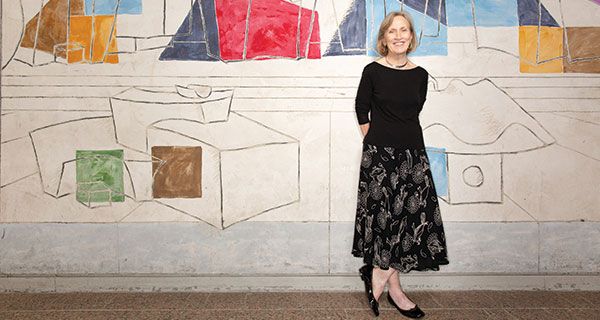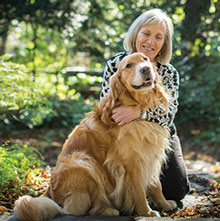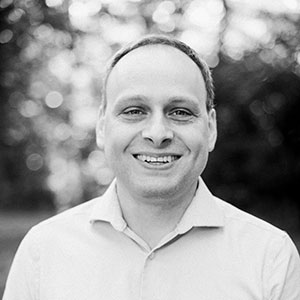People in Economics
Time Traveler
Peter J. Walker profiles Claudia Goldin, who pioneered the study of women’s role in the economy

For those who are dismayed at the depth of political and economic division in the United States today, Harvard University economics professor Claudia Goldin has a simple reminder: there is nothing new under the sun.
"Deep political divisions arose in the past ... particularly in periods of rising and high income and wealth inequality," Goldin says in an interview with F&D. She fondly cites the prediction that an income tax would be the beginning of "a war of the poor against the rich," made by Associate Justice Stephen Field as the Supreme Court struck down the 1894 income tax law. (The 16th Amendment in 1913 cleared the way for today’s income tax.)
The 72-year-old economic historian, labor economist, and gender expert draws lessons from the past to better understand the present. In a career spanning more than four decades, Goldin has studied the economic effects of technological change, inequality, education, water pollution, and corruption. She is best known for her research and insights into the role of women in the US economy and for developing a sophisticated, nuanced understanding of the reasons for the well-documented gender pay gap.
She is a media regular on Equal Pay Day, which marks how far into each year American women must work to match men’s earnings in the previous year. (It will be April 2 in 2019.) Goldin’s research covering 200 years of economic history shows that unequal pay isn’t so much about discrimination, but rather reflects the high cost of workplace flexibility and combining work with family, as she explains to interviewers on the air every year.
Goldin is frequently cited as one of the 10 most influential female economists in the world. She pioneered the study of women’s role in the economy 40 years ago, inspired new generations of female economists, and helped bring gender economics into the mainstream. Goldin won the IZA Prize in Labor Economics in 2016 and the Society of Labor Economists’ Mincer Prize for lifetime contributions in 2009. She was president of the American Economic Association in 2013–14 and was the first woman to receive tenure in economics at Harvard and the University of Pennsylvania.
Born in 1946 in the Bronx, a borough of New York City, Goldin recalls an early fascination with investigation and intellectual discovery, immersing herself in the wonders of Manhattan’s museums as she fell in love first with archeology, then bacteriology. She went to Cornell University initially to study microbiology but came to embrace the humanities and social sciences, especially history and economics, which became her undergraduate major. She completed her doctorate in industrial organization and labor economics in 1972 at the University of Chicago.
Goldin explains why history is important to economics, citing the book The Race between Education and Technology (2008), which she wrote with fellow Harvard labor economist Lawrence Katz, who is also her husband.
"Larry Katz and I looked at changes in income inequality post-1980 versus pre-1980 and investigated the theory that inequality has risen more post-1980 because of skill-biased technological change," Goldin says. "History allowed us to understand that skill-biased technological change is not new but has been around for a very long time and to identify the longer-term forces at work."
The earnings gap between more-educated and less-educated workers was also wide in 1915, then narrowed until the 1950s, and then expanded again in the 1980s, Goldin and Katz found. By studying the whole century, they saw that changes in the supply of and demand for college-educated workers explain most of the fluctuation in wage premiums for better-educated workers. These ups and downs reflect a race between education and technology as the education system keeps up with evolving technologies’ changing demands for skills.
Making her mark
As the feminist movement unfolded in the 1970s, Goldin discovered where she could make her mark: in studying women’s participation in the economy. She was living through a period of significant social change and a transformation of perceptions about the role of women.
"I realized that something was missing," she wrote in "The Economist as Detective," her 1998 autobiographical essay. "I was slighting the family member who would undergo the most profound change over the long run—the wife and mother. I neglected her because the sources had. Women were in the data when young and single and often when widowed. But their stories were faintly heard after they married."
Starting in the late 1970s, Goldin conducted a series of studies examining how various dimensions of women’s participation in the US labor force evolved over 200 years. In the book Understanding the Gender Gap: An Economic History of American Women (1990), she noted how the history of gender wage gaps is characterized not by steady progress but by distinct spells when the gaps narrowed, including in the early 19th century with mechanization, in the early 20th century with the rise of clerical work, and in the 1980s with gains in women’s educational attainment.
In her 2006 paper "The Quiet Revolution That Transformed Women’s Employment, Education, and Family," Goldin identified four phases going back to the late 19th century that shaped women’s role in the US economy. She found the first three phases to be "evolutionary," identifying them as "independent female worker," up to the 1920s; "easing the constraints on married women in the labor force," 1930s–1950s; and "roots of the revolution," 1950s–1970s. Then came the "quiet revolution" starting in the late 1970s.
While important advances were made through the evolutionary phases, women in those periods were more likely to view their working lives as intermittent and a means to put food on the table, Goldin wrote. Women also had limited control over key decisions affecting their employment. By contrast, women of the quiet revolution generally viewed their careers as a significant part of their personal identity and made their own decisions about their working lives. Goldin found that this latest phase was triggered mainly by increased availability of contraceptives and a rising divorce rate.
Equality’s final frontier
The quiet revolution did not, however, close the gender wage gap. In a 2014 paper, "A Grand Gender Convergence: Its Last Chapter," Goldin identified narrowing the gap as one of the final challenges for workplace gender equality in the United States and other advanced economies. This is where Goldin’s research broke new ground and moved the discussion beyond explanations built on sexism. She showed that most of the wage gap reflects the high cost of "temporal flexibility"—or women working fewer or more flexible hours to allow them to raise a family. Consequently, narrowing the gap will depend on restructuring jobs to incorporate greater flexibility for all workers, thus reducing the costs associated with flexibility. While such a fundamental change may sound like a tall order, Goldin has pointed out that the shift has already taken place in areas including technology, science, and health care. This benefits both women and men, she says.
"If it’s only the women who are putting pressure on firms to provide more flexible jobs in a less expensive manner, not that much is going to happen," Goldin says.
As extensive as Goldin’s work on gender has been, her academic contributions extend even further. In their 2006 edited volume, Corruption and Reform: Lessons from America’s Economic History, Goldin and Harvard economist Edward L. Glaeser studied the significant decline in American public corruption between 1870 and 1920. She identifies a vigorous, independent, free press as the fundamental driving factor.
"The Fourth Estate, in informing the public what was really going on, in reporting and doing the very best investigative journalism, was extremely important," she says. "Our research showed how the more neutral and apolitical free press emerged in the US in the late 19th and early 20th century."
In their paper "Watersheds in Child Mortality: The Role of Effective Water and Sewerage Infrastructure, 1880 to 1920" (2018), Goldin and the Stanford medical school’s Marcella Alsan suggest a central focus for low-income countries trying to reduce deaths among children. Analyzing data from Boston between 1880 and 1920, they found that a third of the decline in child mortality resulted from efforts to provide clean water and effective sewage systems. Developing economies could achieve better results by building clean water and sewage systems than by pursuing other piecemeal policies, Goldin told F&D.

In 2014, Goldin started the Undergraduate Women in Economics Program, an initiative to encourage more female economics majors. The ratio of undergraduate men to women majoring in economics has been stuck at 3-to-1 for 20 years, she says, suggesting that many young women are put off by the field because they don’t envision pursuing careers in finance or banking.
"If they understood that economics is an extremely broad and helpful discipline, they would realize that they could do an economics major and be more competitive in a range of areas," Goldin says. The program focuses on a randomly selected group of 20 US universities and colleges from among those that produce about 25 economics majors a year. These include the University of California, Berkeley; Colorado State University; Princeton University; Washington and Lee University; and Williams College. It offers small grants of about $12,500 to encourage women to pursue economics degrees. ("That’s a lot of pizza!" she says.)
Building a legacy
For 28 years ending in 2017, Goldin was director of the Development of the American Economy (DAE) Program at the National Bureau of Economic Research (NBER). Over the past two decades, economic historians have published a rising number of papers on economic history in top economics journals.
"Claudia shaped the program into a productive research environment, combining economic theory and historical evidence," says Princeton’s Leah Boustan, who is the program’s current codirector, along with Vanderbilt University’s Bill Collins. "Under Claudia’s leadership, the DAE became a nurturing setting characterized by constructive criticism and openness to new ideas."
For her part, Goldin points to her broad view of the scope of economics as a major contribution to the NBER’s work.
"I think that the legacy is that I expanded the group to include a host of fields not considered in the original conception," she says. That included "researchers from other parts of the NBER who were using historical materials and understood the special methodology of economic history."
The 98-year-old NBER, based near the Harvard campus in Cambridge, Massachusetts, is where Goldin and Katz met as they pursued research projects.
"It’s a joke of ours that we call it the National Bureau of Economic Romance," she says. Besides economics, they share interests in bird watching, hiking, and walking their eight-year-old golden retriever, Pika. Goldin maintains a section on her Harvard web page documenting Pika’s achievements as a competitive scent dog, including a photo of him covered with his prize ribbons. It’s perhaps a faint echo of her childhood investigative pursuits in museums around New York in search of clues about the world around her.
PHOTO: BRYCE VICKMARK PHOTOGRAPHY
Opinions expressed in articles and other materials are those of the authors; they do not necessarily reflect IMF policy.









